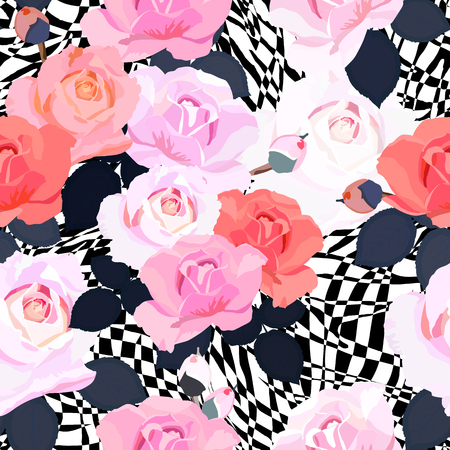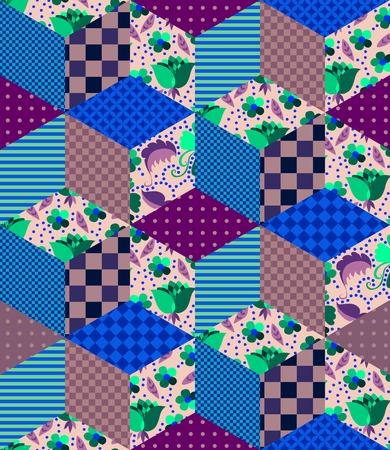Introduction to British Heritage in Interior Design
The charm of British heritage motifs lies in their rich history and enduring presence within the home. For generations, patterns such as florals, checks, and stripes have adorned interiors across the UK, reflecting a deep appreciation for tradition, craftsmanship, and storytelling through design. These iconic patterns are not merely decorative; they are woven into the fabric of British culture, evoking memories of countryside cottages, stately manors, and the layered elegance of time-honoured homes. Today, as contemporary bedroom décor evolves, incorporating these classic motifs allows homeowners to celebrate their cultural roots while creating spaces that feel both familiar and fresh. Embracing British heritage patterns is more than a stylistic choice—it is a tribute to the legacy of British design, offering warmth, character, and a sense of continuity within modern living environments.
2. The Timeless Appeal of Florals
Florals are an enduring motif within British interior design, famously championed by the likes of William Morris and deeply embedded in the essence of cottage-style living. These classic English floral patterns, with their intricate vines, wildflowers, and botanical flourishes, evoke a sense of countryside nostalgia while adding charm and vibrancy to bedroom décor. When seeking to incorporate these heritage-inspired prints, consider how they can be woven into various aspects of your bedroom for a layered yet harmonious effect.
Classic Influences: William Morris and Cottage Style
William Morris’s iconic prints, such as ‘Strawberry Thief’ and ‘Willow Boughs’, remain popular for their rich detail and organic forms. These designs epitomise the Arts and Crafts movement’s celebration of nature and craftsmanship. Meanwhile, the quintessential British cottage look—think rambling roses, delicate posies, and soft greenery—offers a lighter, airier alternative that still captures the romance of rural England.
Ways to Incorporate Floral Patterns
| Element | Description | Top Tips |
|---|---|---|
| Bedding | Duvet covers, pillowcases, and throws adorned with florals create a statement focal point on the bed. | Mix small-scale prints with bold blooms for visual interest; pair with crisp white linens for balance. |
| Wallpaper | Feature walls or entire rooms clad in traditional floral wallpaper bring depth and character. | Select subtle pastel backgrounds for smaller spaces; reserve dramatic patterns for larger feature walls. |
| Soft Furnishings | Cushions, curtains, and upholstered chairs can all carry botanical themes without overwhelming the room. | Layer different floral fabrics within a cohesive colour palette to achieve that curated British look. |
The Art of Subtle Layering
The key to mastering florals in a British heritage scheme lies in thoughtful layering. Start with a hero print—perhaps on bedding or a feature wall—and complement it with more understated floral accents across cushions or lampshades. This careful blending of patterns ensures your space feels inviting rather than overpowering, reflecting both tradition and modern comfort in equal measure.

3. Elevating Bedrooms with Checks and Tartans
The enduring appeal of checks and tartans is deeply rooted in British heritage, evoking both a sense of tradition and a touch of countryside charm. From the iconic Scottish plaids to classic gingham, these patterns have long been associated with warmth, comfort, and family legacy.
Understanding the Heritage of Checks and Tartans
Tartans are intrinsically linked to Scotland, where distinct clan patterns tell stories of ancestry and regional pride. Plaids and checks have also become staples in English interiors, often seen in rural cottages as well as stately homes. Gingham, meanwhile, is reminiscent of rustic farmhouse settings—lending a nostalgic nod to simpler times.
Tips for Integrating Checks and Tartans
Incorporating these patterns into your bedroom can be both stylish and meaningful. Consider layering a tartan throw over the end of your bed or draping it across an armchair for instant cosiness. Cushions in contrasting checks or plaids add visual interest without overwhelming the space—choose muted tones for subtlety or vibrant hues for a bolder look.
Practical Upholstery Choices
Upholstering a headboard or footstool in tartan fabric not only introduces texture but also acts as a statement piece that anchors the room’s design. For a more understated approach, opt for gingham trims on lampshades or curtain tiebacks to subtly echo traditional British motifs throughout the décor.
4. Stripes: From Regency to Modern British
Stripes have long played a distinguished role in British interior design, transcending eras from the opulent Regency period to the breezy charm of seaside holidays. Historically, the Regency era saw stripes used in elegant drawing rooms, with subtle yet sophisticated lines in wallpapers and upholstery conveying a sense of refinement and order. By contrast, the bold deckchair stripes that became iconic along Britain’s coastlines in the 20th century brought a playful, casual spirit into domestic spaces.
Historical Influence of Stripes in British Interiors
| Era | Typical Stripe Style | Common Uses |
|---|---|---|
| Regency (1811–1820) | Narrow, elegant vertical stripes in muted or pastel tones | Wallpapers, silk drapes, upholstered headboards |
| Victorian (1837–1901) | Bolder stripes, sometimes with floral overlays | Wallpaper borders, bed linens |
| 20th Century Seaside | Wide, colourful deckchair stripes | Curtains, throws, accent pillows |
Practical Tips for Incorporating Stripes Today
The versatility of stripes makes them ideal for adding both structure and energy to bedroom decor. Here’s how you can bring this heritage-inspired motif into your home:
- Accent Walls: Vertical stripes on an accent wall can visually heighten ceilings and give a room a stately feel reminiscent of Regency salons. Choose neutral or soft hues for timeless elegance or experiment with navy and white for a more coastal, contemporary look.
- Linens: Crisp striped bedding instantly freshens up the space and adds a tailored touch. Opt for fine pinstripes for subtlety or broader bands if you want a statement piece that nods to classic deckchair style.
- Curtains: Floor-length striped curtains not only frame windows but also echo the grandeur found in traditional British homes. For smaller rooms, narrower stripes prevent overwhelming the space while still providing visual interest.
Maintenance Advice: Keeping Stripes Looking Their Best
To maintain the sharpness and vibrancy of striped fabrics and wallpapers:
- Launder striped bed linens in cool water to prevent colour bleeding.
- If using wallpaper, opt for washable or scrubbable finishes suitable for British climates.
- Avoid prolonged direct sunlight on striped curtains to minimise fading—consider lining them with blackout material.
Summary Table: Where to Use Stripes Effectively in the Bedroom
| Feature | Best Stripe Style | Heritage Inspiration |
|---|---|---|
| Accent Wall | Narrow vertical or bold deckchair stripes | Regency & Seaside Motifs |
| Bedding & Linens | Pinstripe or wide banded patterns | Victorian & Coastal Influence |
| Curtains & Upholstery | Tonal or contrasting stripe combinations | Traditional Drawing Rooms & Modern Retreats |
By thoughtfully layering stripes alongside florals and checks, you can achieve a truly British blend that honours heritage while feeling fresh and inviting.
5. Mixing and Balancing Patterns the British Way
Achieving a harmonious bedroom design that reflects true British heritage is all about the art of mixing and balancing patterns. To evoke that signature English charm, start by selecting a cohesive colour palette—think muted pastels, rich jewel tones, or even classic navy and cream. This foundation will allow you to layer florals, checks, and stripes without overwhelming the space.
Layering with Intention
Begin with your largest surface, typically the bedding or curtains, as the anchor for your primary pattern. If you choose a bold floral duvet cover, complement it with subtle checked cushions or striped throws. The key is to vary the scale; pair large blooms with smaller checks or fine pinstripes to avoid visual clutter and to draw the eye comfortably around the room.
Using Texture for Depth
British interiors often marry visual patterns with tactile textures. Incorporate woven woollen throws in tartan checks or crisp cotton striped pillowcases to add warmth and authenticity. A velvet floral headboard or linen curtains can soften geometric patterns, contributing to a layered yet balanced scheme.
Maintaining Symmetry and Flow
Balance is crucial for a restful bedroom atmosphere. Distribute patterns thoughtfully—if florals dominate one side of the room, introduce stripes or checks on the opposite side through lampshades, rugs, or upholstered chairs. This creates a sense of equilibrium typical of refined British bedrooms.
Finally, remember that restraint is just as important as creativity. Allow areas of solid colour to break up patterned elements and let each motif have its moment to shine. With careful curation and a nod to tradition, your bedroom can capture the timeless elegance and comfort that define British heritage style.
6. Finishing Touches: Accessories and Vintage Finds
To truly capture the essence of British heritage in your bedroom decor, it’s essential to layer in accessories and vintage finds that evoke a sense of history and personal narrative. Begin with antique bedside clocks; these not only serve a practical purpose but also add an old-world charm reminiscent of a quintessential English cottage. Pair them with woven baskets—perfect for storing throws or magazines—crafted from natural materials that nod to Britain’s rural traditions.
Consider introducing heirloom quilts or hand-stitched bedspreads, ideally in florals or checks, to drape over your bed or armchair. These pieces often carry stories passed down through generations, adding warmth and authenticity to the space.
Add Personal and Storied Details
Enhance the narrative quality of your room by displaying family photographs in vintage frames, arranging a collection of classic British novels on a bedside shelf, or showcasing a few cherished trinkets picked up at local antiques fairs. Incorporate elements such as ceramic lamps with heritage motifs, embroidered cushions, or even a framed section of traditional wallpaper for a gallery effect.
Create Inviting Layers
Layering different textures and patterns is key. Mix woollen throws with velvet cushions and cotton runners to achieve that invitingly lived-in British look. Don’t shy away from combining florals, checks, and stripes within your accessories—this eclectic blend is a hallmark of British style.
The Final Flourish
Finish the scheme with fresh flowers in a cut-glass vase or potted herbs on the windowsill for a touch of countryside freshness. By thoughtfully selecting these accessories and vintage finds, you’ll create a bedroom that feels both curated and comfortably British—a space where every item tells its own story.

